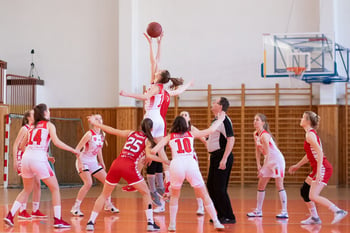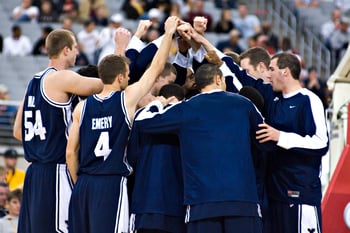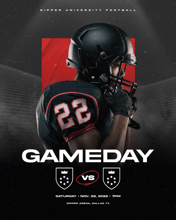How Athletic Director Job Descriptions are Changing in 2023
The year 2023 is upon us and whenever a new year approaches, it's only natural to take some time for reflection. The job description of an athletic director is vastly different today than it was just a few short years ago and the changes have been swift and monumental. So what has changed and where is it trending for the future?
In the past, the focus of a high school athletic director was primarily on managing and organizing athletics events, hiring and supervising coaches, and ensuring compliance with rules and regulations.
The Times are Changing
In recent years, this role of athletic administrator has become much more complex as there has been increased integration of technology, greater emphasis on student-athlete welfare, and larger focus on fundraising and sponsorship efforts. Things that were once seen as additional tools or luxuries for athletic departments have now become commonplace expectations for the role of an athletic director.
So what does 2023 and beyond look like for athletic directors? Let's dive into the biggest changes this profession has seen recently and why they are here to stay in the years ahead.

What's new?
Social media has evolved into a core component of athletic director responsibilities
It's no exaggeration to say that social media has become a staple in society over recent years. Billions of people around the world use platforms such as Facebook, Twitter, and Instagram to connect with others, share information and content, and to stay informed about the world around them.
Because of the way social media has transformed the way we communicate to one another, it's become extremely important for athletic directors to adapt this method of communication into their daily practice.
In 2023 and beyond, social media will no longer be an optional luxury for athletic directors.
It was less than 10 years ago that schools relied on seldom-updated websites to distribute information to their community and families. Athletic directors can now communicate with more people more immediately than ever before. By meeting your stakeholders where they are, you're easily able to post, tweet, and share info in real time, and even casual scrollers will see that information as it is sent out.
Additionally, it has never been easier to establish and promote your school's brand through social media channels. The branded look and feel of a college or professional sports organization is now attainable to schools of all sizes..png?width=180&height=218&name=Phone%20mockup%2002%20(1).png)
Social media used to be seen as an additional responsibility for athletic directors and only a luxury for programs with additional staff. Recently, we've seen this mold into a core function of the job as the power of communicating via social media is too valuable to ignore any longer.
Social media isn't going away anytime soon, and neither is the expectation that athletic directors will engage and communicate with their community through a variety of channels.
Software is now an integral part of an AD's role
Scheduling
It wasn't that long ago that athletic directors were comparing printed schedules and using planner books to keep track of all of the games and practices scheduled. If something got changed or updated, you had to hope the eraser on your pencil worked.
The biggest issue with the old school paper schedules was ensuring everyone else was communicated of the changes that inevitably happen as the season progresses. Online scheduling platforms have made it a one-stop shop and changes are reflected immediately for everyone to see the moment they happen. Many platforms also have a notification function so that anyone signed up for them will automatically be communicated as soon as something is updated or added.
Nobody is in a rush to go back to paper schedules, and this is mostly because of the convenience and efficiency it has provided. Expect scheduling software solutions to grow and develop in 2023 and beyond.
Communication
Athletic directors have recently started to enact a formalized process for communication between stakeholders in their athletic department. To give some context on how much this has changed recently, a few years ago, the norm was for coaches to give information to their athletes at practice, and then those athletes relayed the information to their parents. This game of "telephone" often led to confusion and uncertainty once a change took place.
With new technologies in this space, such as Heja, communication between coaches, athletes, parents, and supporters has gotten more organized and is now a lot easier to manage. In the information age, keeping everyone in the know via multiple channels has gotten increasingly more important.
Communicating now is as easy as typing out a few sentences and sending it out to everyone involved. For some further reading on communication applications, check out one of our recent blogs that goes a little more in depth.

Video Analysis Software
Thinking back to the older days where coaches used to exchange game film in a parking lot, video software has improved drastically over the last decade or so. The ability to record games, practices, and clips and instantly share them with anyone has literally changed the game for coaches and athletic administrators everywhere.
Hudl, an official Gipper partner, has become an industry standard for their software solution to video analysis and is used by athletic departments across the globe. What was once a simple solution for trading game film has developed into a conglomerate for live streaming, stat tracking, clip sharing, and more.
Digital Ticketing
Selling tickets for admission to athletic events has undergone a large change in recent years as well. Schools are finding the ease of use in selling tickets digitally so that they are accessible on anyone's cell phone. HomeTown Ticketing, an official Gipper partner, offers a cashless solution to your community and attending events is easier than ever before. Why deal with a cash box when you can handle everything with a smartphone?
Branded Media / Graphics
Effective communication is such an important part of any athletic director's job description today. With the rise of social media in society, it's not only important for your message to be delivered, but for it to stand out in a way that represents your school and community in the best way possible.
No matter the size of the school district, proper branding should be as consistent as possible to ensure your identity matters and is recognizable. Having a professional logo and consistent school colors will go a long way in ensuring everything you post is immediately identifiable to your school.
Keep in mind, for many communities, their local school athletics programs are something they root for and have immense pride in supporting. Using software like Gipper bridges the gap between a smaller athletic department and a college or professional teams marketing and social media department. Anyone can make professional looking branded media and graphics and in turn, elevate the way their program is represented online.
Keep your community up to date with the latest scores.
Celebrate and highlight all of the great happenings within your program.
Increase attendance and promote your upcoming events.
Student-athlete welfare has risen to prominence
Consider the vast amount of changes in policies, procedures, and education surrounding concussions in sports. What was once an afterthought has now turned into a core function of athletic directors and athletic trainers to ensure compliance for return-to-play protocols.
Athletic directors around the country are also seeing benefits to implementing mental health awareness programs into their schools. Empowering students to take initiatives that are directly impactful to their day-to-day lives has made for a more robust and humanized athletic program to support the whole student-athlete.
Effective student leadership councils have also risen in popularity among high schools as athletic directors recognize the tangible benefits of having students learn how to lead by example. Having a strong core of responsible student-athletes opens the door for so many new initiatives, ideas, and way to improve their athletics program.

The athletic director job description has changed (for the better)
Earlier we mentioned the core responsibilities that you'd expect to be the baseline for an athletic director of the past. This would include managing and organizing athletics events, hiring and supervising coaches, and ensuring compliance with rules and regulations. As interscholastic athletics evolves, it's prominence in school culture has made it necessary for school districts to adapt and relinquish significant responsibility among the athletic director position.
The transition from a basic athletic coordinator role to a more diverse athletic director or administrator role is a direct result of schools recognizing the benefits of having a full-time athletic director employed. The expectations around the position are no longer as simple as making sure games are scheduled as needed and everyone is where they need to be on time. Athletic directors are now brand ambassadors, assistant principals, social media marketers, transportation coordinators, and much more.
Now more than ever, it is important to not only "keep up with the times", but recognize that there are solutions out there designed to take the burden off your back in a more simplified way. While more duties seem to continuously be added to your plate, take some time to research options out there that will not only make your life easier, but enhance the athletic program you dedicate so much time to.
Where do we go from here?
The job will continue to adapt and mold over time
The athletic director role is more community facing than any other administrator in a school environment. You are meeting with countless parents, community members, booster club volunteers, and all other stakeholders on a regular basis. This job will continue to adapt and mold as it's clear that a well-run athletic department is crucial for a school's culture and success.
Don't be afraid to try something new
New technologies are rising to prominence and it's okay to embrace new ways to approach being an athletic director. The tools being developed today are finding ways to make your job more efficient or to help stand above other programs in your area. New technology can be scary, but it can also be immensely helpful. Embrace the change!
Collaboration is key
One of the best ways to learn about new ideas is to reach out to your network and check in with one another. To stay up to date, ask other athletic directors questions and find out how they solve particular problems you might come across.
💡 Tip: Consider joining an online community of athletic directors, such as FieldHouse. Learn, share, and connect with likeminded professionals across the nation. It's hard to find another profession that is so willing to share ideas, processes, and information for the betterment of their local cohort.
The last few years have not been easy, and a lot of athletic directors have been forced to adapt with recent changes. It's important to remember that this is an exciting time to be in this profession even though changes are happening quite swiftly. 2023 should hopefully bring some normalcy, with the additional excitement of knowing the adaptation of the athletic director position is moving towards a better more efficient time at work.
Matt Ehrenreich
Community Manager @ Gipper


